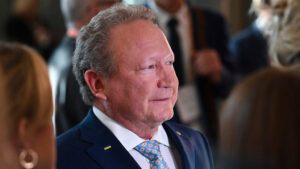Australian Mines identifies high-priority target for follow-up exploration at the Jequie REE project in Brazil
The target contains a 30km long by up to 2.5km wide thorium anomaly – a common indicator of REE mineralisation
Potential to host adsorption clay-hosted REE mineralisation, monazite sand deposits and primary REE deposits
Surface soil and outcrop rock-chip sampling to prioritise targeting for auger drilling
Special Report: Preliminary exploration work at Australian Mines’ Jequie rare earths project in Brazil’s Bahia state has identified a high-priority target for follow-up exploration.
The ~826km2 Jequie project is immediately adjacent to the 510Mt Rocha de Rocha rare earths project – comparable to the world’s biggest non-Chinese rare earth clay project at Serra Verde – that is operated by the Gina Rinehart-backed explorer Brazilian Rare Earths (ASX:BRE).
REE mineralisation in this region can typically be found in three mineralisation models:
REE-enriched phases within hard rocks;
REE concentration by the physical degradation of REE-enriched source rocks by weathering to form soils and sands (e.g. monazite sands); and
REE concentration by the advanced weathering of source rocks to form saprolite and saprolite clay horizons enriched by adsorption (ionic clay mineralisation).
Jequie is also expected to benefit from associated complementary infrastructure of sealed roads, access to clean hydropower and a major deep-water port less than 200km away.
Australian Mines (ASX:AUZ) acquired both Jequie and the Resende lithium project in the Minas Gerais State in December last year as part of a “reset” into a battery metals-focused company.
As part of this, the company will be renamed EcoMetal Resources.
The airborne radiometric thorium anomaly at Jequie. Pic: Supplied (AUZ)
Exciting target at Jequie
The revitalised company will have an exciting target to pursue at Jequie in the form of the new target which comprises:
An extensive airborne radiometric thorium anomaly – a good indicator of rare earths mineralisation – that stretches for 30km in length and a width of up to 2.5km;
Thick, in-situ saprolite and saprolite clay profiles that could host highly sought-after ionic adsorption clay-hosted rare earth deposits and/or monazite sand deposits; and
Identified outcropping leucogranite and charnockite which could either host primary REEs or represent the source of secondary REE oxides contained within weathered saprolite clays.
Adding interest, field testing with a portable scintillometer returned positive readings for the presence of potential REE-bearing minerals in outcrop.
“We are very pleased to have rapidly identified and ground-truthed such a high priority target,” AUZ chief executive officer Andrew Nesbitt said.
“The target has all the ingredients to contain a significant rare earth element resource, and we are looking forward to the next phase of exploration.”
Given the highly encouraging results from its initial reconnaissance work, AUZ plans to rapidly progress surface soil and outcrop rock-chip sampling to prioritise targeting thick weathered saprolite and saprolite clay horizons for auger drill testing.
This article was developed in collaboration with Australian Mines, a Stockhead advertiser at the time of publishing.
This article does not constitute financial product advice. You should consider obtaining independent advice before making any financial decisions.
The post Australian Mines’ new Brazilian REE target has all the ingredients for a succulent fry-up appeared first on Stockhead.























+ There are no comments
Add yours